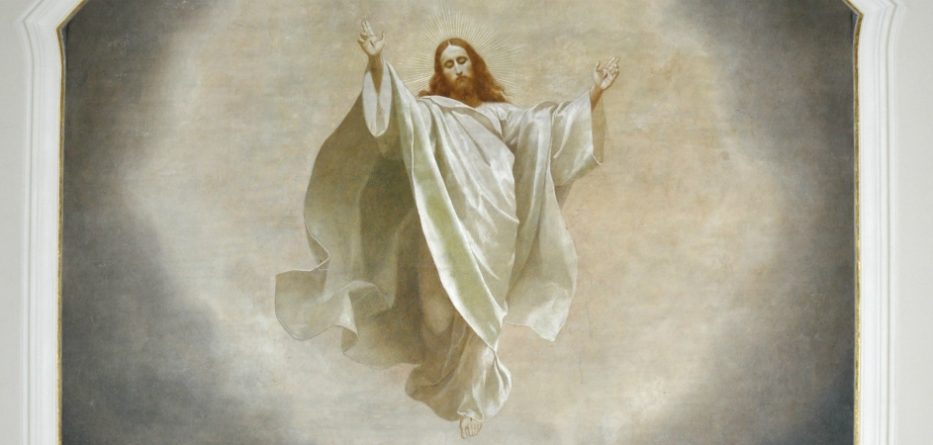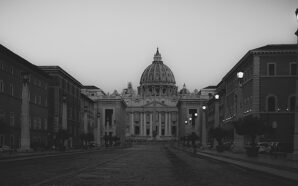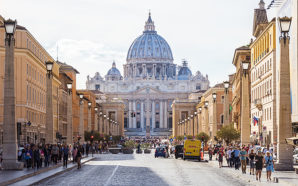Christ’s ascent into heaven after the resurrection should not be understood merely as a physical elevation, as if he took off like a rocket, going to outer-space. It is about a metaphysical elevation, that is, the completion of the transformation of human nature as it is glorified and brought into the eschaton. This is portrayed symbolically; we are presented with a description of the ascent where it is said that he ascended into the sky, into the heavens. This presentation was done in order to suggest that Jesus not only was glorified, but that he is also lord over all creation. This is not to say, historically, there might not be some element of him “flying” into the sky, but this was only done to help establish the symbol, for ultimately, his ascent took him beyond space and time, into the eschaton, showing to us the change which will take place in us at our own resurrection from the dead. Upon our entrance into the eschaton our bodies will become spiritualized as well, and like Jesus, we will find ourselves no longer bound by empirical laws.
Christ’s ascension is not meant to have us think he is now somewhere in space waiting for the time to come back down to earth; instead, we are to understand that he transcended the material sky, indeed, the whole material creation, to become a part of the spiritual reality from which material creation emerged. Material creation can be said to be “within” the spiritual or metaphysical reality, so that all material creation touches and is penetrated by the spiritual reality but not all of the spiritual reality is found within the material realm of being (as it extends beyond it). Because of this, Christ’s body, being spiritualized, is able to be encountered in the physical realm in a new way, explaining, for example, the way we can encounter him in the eucharist:
Thus the repetition of the Last Supper in anamnesis does not simply concern some earthly body and blood, just as Christ Himself after the Ascension is not present on earth in the same way that He was at the institution of the Eucharist. Hence, we are talking about the Body and Blood of Christ in a different sense, that is, in a Heavenly one. [1]
The spiritualized body of Christ is no longer composed of material parts which can be cut up and split apart, but rather, it is one, and always one, and that oneness is what allows all those who partake of Christ to come together and become one, transcending their own material separation from each other. Everyone, no matter what location they find themselves in, no matter the physical size of the eucharistic species they receive, partake of one and the same Christ. They find themselves joined together in and through the oneness of Christ. The eucharistic presence is thus a great mystery because we do not truly understand the spiritual reality and how it works, even if we can apprehend it enough to get a sense of what is going on. And since Christ ascended, since he entered into the spiritual realm, making his very body spiritualized, he is now able to be with us until the end of the age, becoming the living bread which also “descends” to all creation, even into the “lowest” parts of it.
To continue reading this article, click here.
Henry C. Antony Karlson III has done considerable amount of graduate work and study in philosophy, theology, and comparative religious dialogue. He has taught as an adjunct at both Georgetown University and the Catholic University of America. He seeks to engage his readers with a diversity of topics, some cultural, some philosophical, some theological, but all for the glory of God. He is a Byzantine Catholic, who, before establishing his own blog on Patheos, used to be one of many writers on Vox Nova. He has had articles published or republished on many other sites including The Interfaith Observer, Orthodoxy in Dialogue, and Eclectic Orthodoxy.
With thanks to Patheos and Henry Karlson, where this reflection originally appeared.
[1] Sergius Bulgakov, The Eucharistic Sacrifice. Trans. Mark Roosien (Notre Dame, IN: University of Notre Dame Press, 2021), 30.








